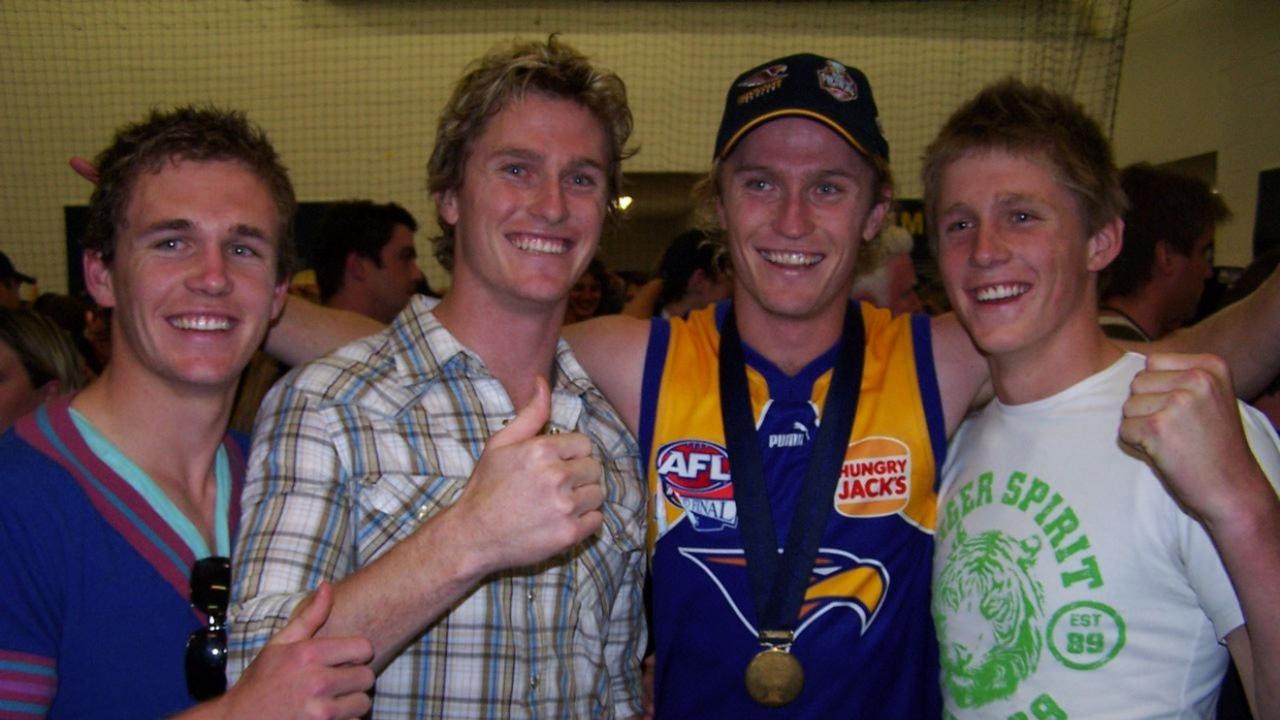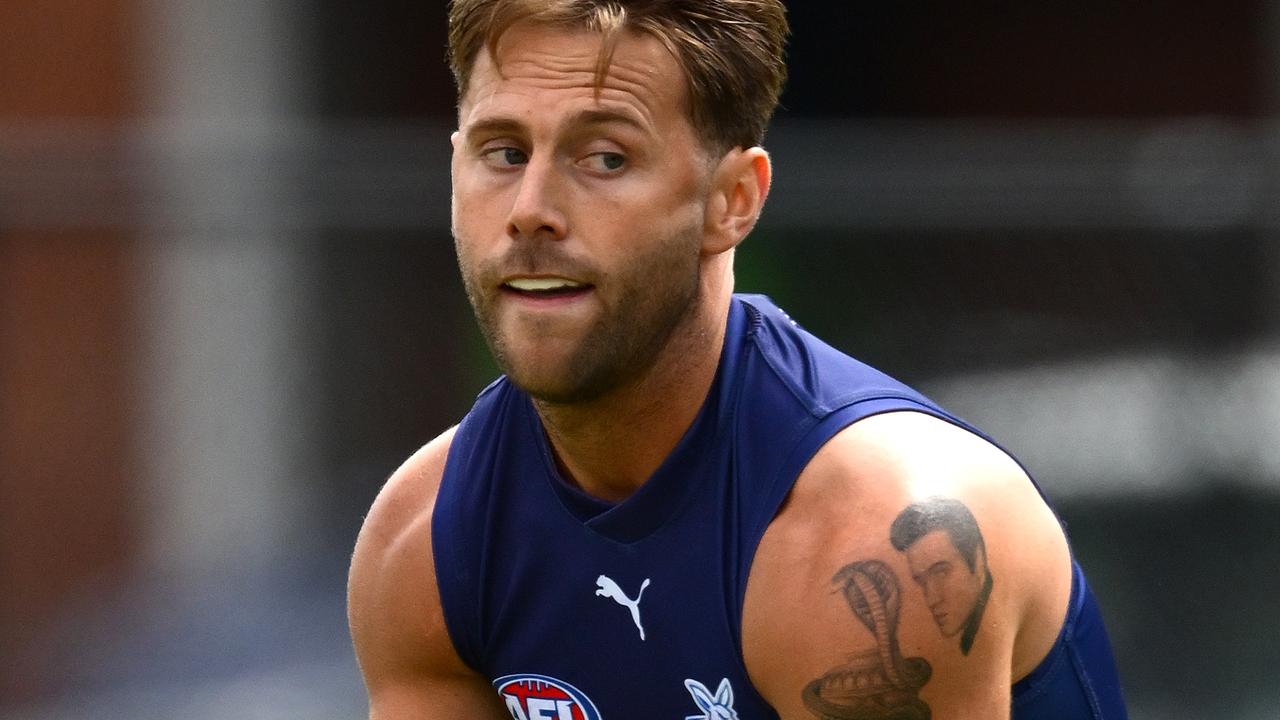Dermott Brereton looks at why North Melbourne has slid down the ladder
FOR every team that has a change of fortune there is cause and effect but there is one major reason behind North Melbourne’s slide, writes Dermott Brereton.
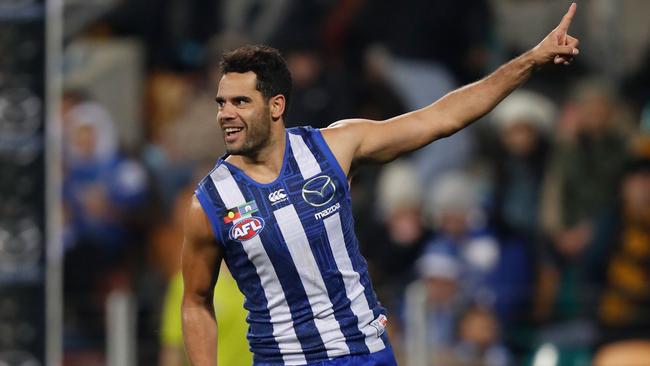
Expert Opinion
Don't miss out on the headlines from Expert Opinion. Followed categories will be added to My News.
FOR every team that has a change of fortune there is cause and effect.
If you can accurately, I mean really accurately identify the cause, then there is a job waiting for you at just about every AFL club.
If you can precisely see the reason why a club isn’t performing as well as it has been, you can at least get a job as a football analyst somewhere.
There are quite a few theories as to why North Melbourne is sliding. And some or most have merit. In fact, they are all more than likely interlinked.
But the real knack of team analysis is to identify the one rickety wheel that set the wobbly cart in motion down the steep hill.
I know it will be easy to look at Drew Petrie and Jarrad Waite and say that their limited output and return is a major contributor. That is part of the problem, a major part of the problem.
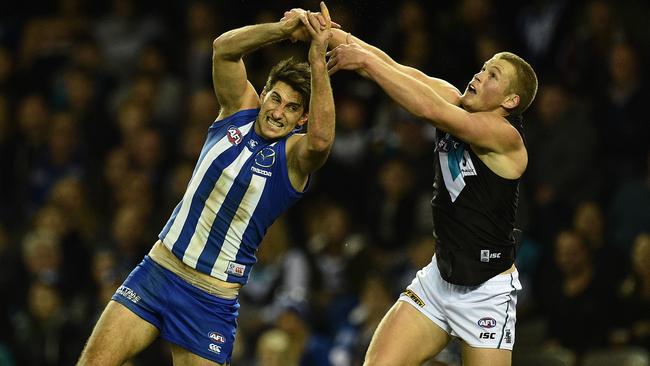
Just as easy is the synopsis that in the first half of the season they played a majority of the teams from outside of what we now see as the top eight. This too has a bearing.
But still I believe that the first signs showed in Round 7 against the Saints and Round 8 against the Bombers.
Rounds 7 and 8 was when the Kangaroos lost both Shaun Higgins and Daniel Wells to injury.
And even though the team continued to win for a little while longer, the slickness of the ball movement and the polished delivery started to decrease.
They still had their moments. They had league leaders Hawthorn on the mat, but couldn’t pin them for the final three count. And they bludgeoned an unstable Richmond down in Tasmania.
But when Higgins and Wells exited, so did speed away from the packs and precision field kicking from their feet.
In the Round 7 win over the Saints, North’s game craft gave them the points.
But there were moments in the last quarter when the Roo boys in the middle couldn’t run back with the Saints midfielders. It was apparent that leg speed and even endurance in the middle was an issue. Jamie Macmillan and Shaun Atley have all the pace, but they are already inside defensive 50.
In Round 8 at half-time we all sensed a 100 plus point drubbing over a beleaguered Essendon team that had been held goalless. But not only could North not put the Bombers to the sword, the Bombers were by anyone’s standards heroic.
Essendon kicked eight goals to North’s two in the second half. So much was their pluck that the Bombers faithful applauded them from the ground and North in victory suffered a small loss of morale.
Wells is a star. North so needed him back and they eventually did get him back, albeit not permanently — he’s missed four of North’s past nine games.
His ability to get the ball on the inside of the pack and take it to the outside by side steps and dance moves is something Fred Astaire would applaud. From there, North can be deliberate as to how they want to use and deliver the ball.
Delivery from the boot of Wells is very, very good. Delivery from the boot of Shaun Higgins is exquisite.
The core of their midfield is rounded out by the other three workers, Cunnington, Ziebell and Swallow. All three are wonderful players, but they are different to what Wells supplied and Higgins as well, as a high half forward.
Cunnington is a ball winning bull. Ziebell is a powerhouse battering ram that thumps the ball by foot rather than caressing it.
And Swallow is a tackling machine.
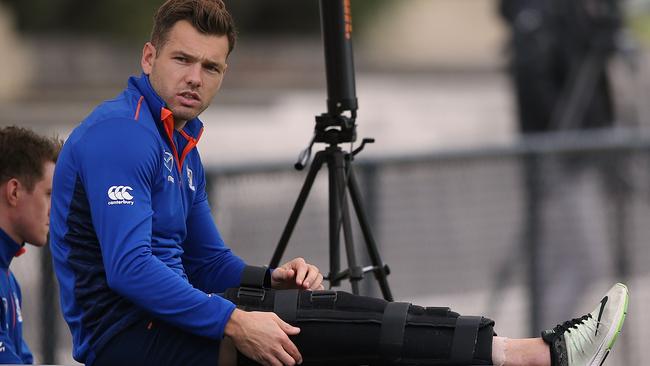
But without Wells and Higgins the core midfield became a little unbalanced. The remaining three can frequently blast kick the ball from the congestion. And that is something that good opposition can set up for in anticipation.
And the better the opposition the more this imbalance is seized upon.
Wells has had some reasonable outings since his return, but his body of work in the first seven weeks far outweighs his past two months.
Nick Dal Santo is still smart, is still deft by foot. But unfortunately when the ball is in Nick’s hands the pace of the true ball movement slows down. In order to get a clean and accurate kick away, Nick runs a half U-turn to let a pursuing tackler slide by him, he then has to run sideways onto that surgical left foot before delivery.
The problem is every opposition knows this and they have his name circled on the pre-match whiteboard for extra heat. It is something that nearly every 32-year-old has to contend with.
I view Atley and wonder whether or not he could be used more in the midfield rather than just running off offensively from the backline when the Roos gain possession.
There would be little doubt that Brad Scott hasn’t thought of this. Perhaps Atley doesn’t have enough sideways movement or isn’t good enough in close confines with his decision making and his hands.
Macmillan has frequently been pushed to a wing in order to use his pace. He is a good player. But of late his kicking has also let him down. His kicking efficiency this season is 75 per cent, in the last month it has been half of that. Last Saturday it was 40%, but then again he was pressured so much that he only had five kicks from 18 possessions.
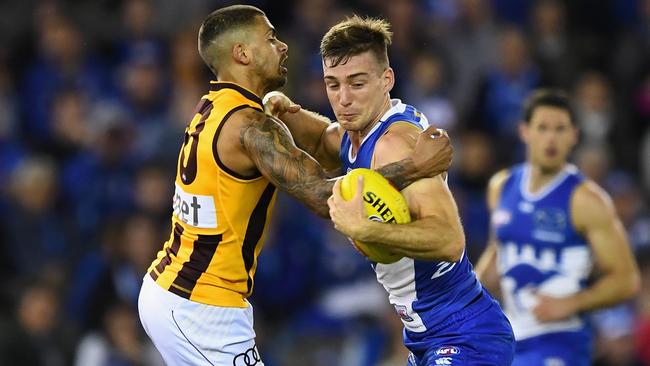
If you can break down and slow North’s ball movement by foot you stand a great chance of beating them.
Sydney showed in Round 10 that without Wells and Higgins, if you sweat on Atley and Macmillan, you can pull apart the rest of their game if you have the right cattle.
There is one remaining gun player that I have rarely seen attend the centre bounces in recent times. And this player has probably got the right physical ammunition to do some damage and handle the ball in the right way and make the right decisions.
It is just a little ironic that this player happens to be equalling the record for the number of games played at the top level.
In game 426, it could be Boomer to the rescue ….

 When Higgins and Wells exited, so did speed away from the packs and precision field kicking.
When Higgins and Wells exited, so did speed away from the packs and precision field kicking. 
